The Chatham Arts Council is investing in artists through our Meet This Artist series, introducing you to 12 Chatham County artists each year in a big way. The fine folks at Hobbs Architects in downtown Pittsboro are powering our Meet This Artist series this year. Architecture is art, and the Hobbs crew values art in our community.
Take a look. Meet your very inspiring neighbors. Meet This Artist.
Steve Fagan doesn’t call himself an artist.
It’s funny to him, sure, but there’s something deeper. The punk rocker he was in the 1980s is still in there somewhere, bucking the label because it is a label.
Fagan’s not sure what to call himself. Artisan? That’s not the word. He doesn’t bake bread… Craft is probably closer, but he isn’t drawn to the craft world, either. He’s creative and capable—yes, he admits that—but he has little use for categories. He never has.
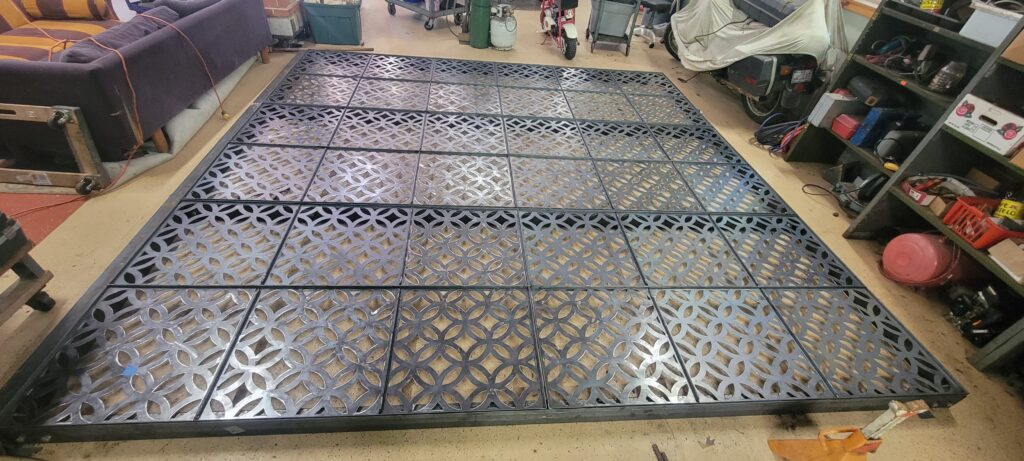
Ever since he was a kid, Fagan has been a doer. Want to play punk guitar? He figured it out. Want to switch to old-time guitar? He figured it out. Want to build a cabin? He figured it out. Want to build a hydroelectric generator in a stream? Want to work with wood? Glass? Want to work with metal and wood and glass? Want to build high-dollar decks and mixed-media garden gates and trellises? Want to live as you wish without compromising your ideals? He figured it out.
“I’ve lived off the grid, and not because I’m a hippie, but because I want to stick it to the man,” Fagan says with a ready laugh. “That’s what it comes down to. I don’t fit into any categories. My first and last job I actually got a paycheck from was as a dishwasher in a Mexican restaurant in Knoxville, Tennessee. I grew up in Knoxville, so I was 16.”
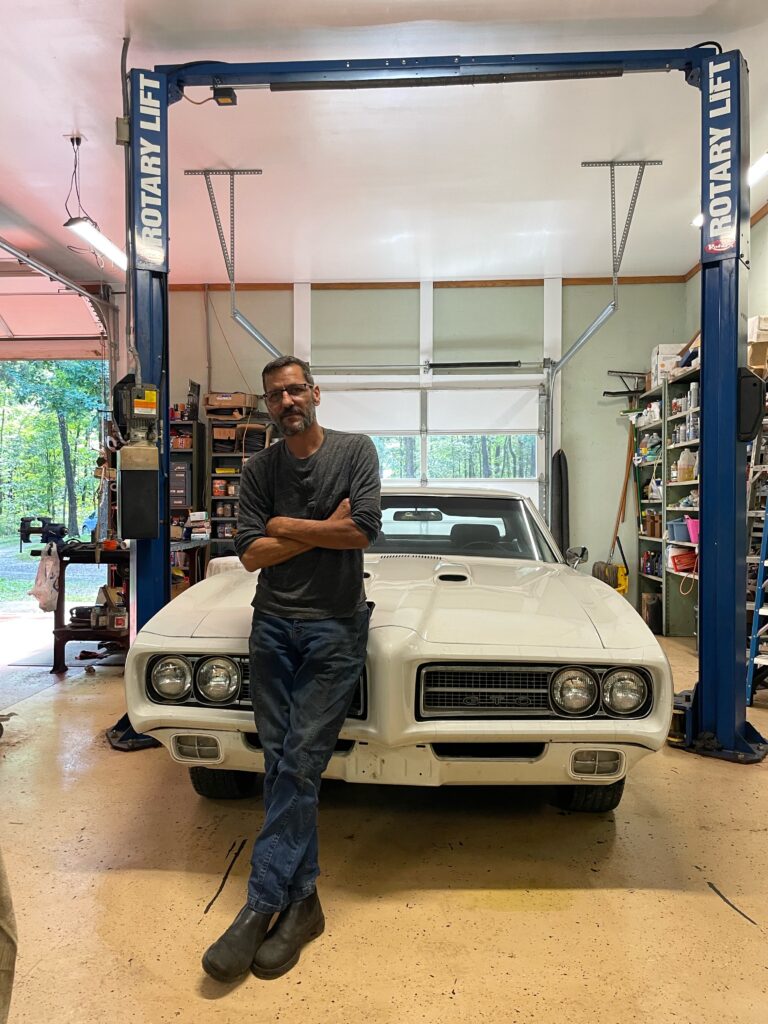
Fagan met me in his metal shop in a shared garage beside a friend’s house north of Pittsboro. It’s hard to ignore his friend’s white GTO—low miles, one owner—parked nearby. On the walls, Deadhead gear. Between the cars and the welding setup, worn-out couches. A sweet old beagle named Tater, faded with age, trots in. Outside, rain drips from the trees, but has finished falling for now.

Fagan’s work is difficult to pin down. On paper, he’s most likely a mixed-media craftsperson slash artist. His creations—decks and ornamental gates; trellises and railings; cabinets and custom doors—add personality and style to the homes they embellish. He has worked with his hands for 35 years, learning welding in community college, but teaching himself carpentry, stained glassworking, and any ability he finds useful, necessary, or interesting.
Keep talking to him, though, and he casually mentions being at the ground floor of the Shakori Hills Grassroots Festival and the Hoppin’ John Fiddlers’ Convention. He’s the guitarist, too, of The Hoppin’ Johnnies—the fiddlers’ convention’s namesake house band. As a kid, he opened for some of the most seminal punk bands of the ‘80s. And now he spends his working hours—his making stuff hours—contentedly turning whatever he can imagine into stunning creations of metal, wood, and stained glass.
You homesteaded a mountain. How does one homestead a mountain?
My grandfather died in 1989 or 1990, and I inherited my father’s portion, because my father died when I was nine years old. You could buy 100 acres of land in 1990 for $40,000. My second wife and I bought [land in Madison County], and we grew everything we ate for years. We raised pigs. We raised chickens, not for meat—well, we ate them—but we raised them for the feathers, for the hackles, and we sold them to this outfit in Montana that tied flies and this lady in New York that made hats.
I built a house with no electricity—just a hand-hewed log cabin with an axe and a chainsaw and a hammer, mixing concrete in a wheelbarrow and dragging logs out of the woods with an old funky Toyota Land Cruiser. It rambled on and turned into an 1800 square foot house.
We lived up there for seven years with no electricity—just a car battery. We charged the battery in our Subaru and our Volkswagen van and drove to town, and that’s what our electricity was. Gravity-fed spring water. Outhouse. I got my first refrigerator six years ago. I got my first refrigerator as an adult. I’m 54 years old. That’s something. (laughs)
I came down here because I got involved with Shakori Hills. I started with Jordan Puryear and Robert Mitchener and a few other people. We started the Shakori Hills Festival. I met my love, who I live with now, so now I’m here permanently.
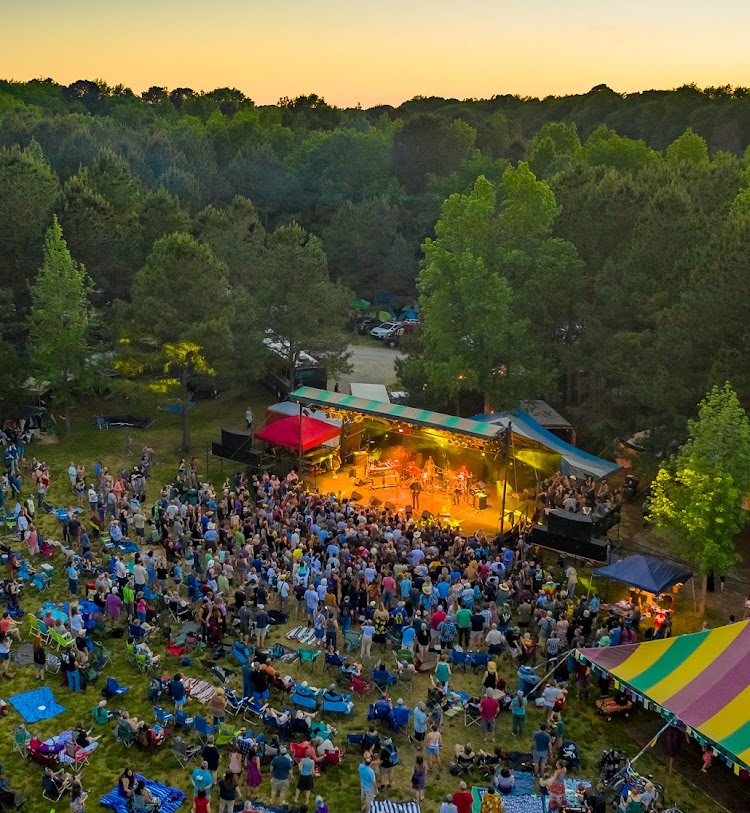
Let’s talk about music. I want to talk about how you got from young and loud and punk rock to being deeply involved in old-time.
When I was 15 . . . I had this really cool girlfriend, and I quote-unquote “ran away from home” and I moved in with her. Her mom was really hip, and she had a little carriage house. Her little brother had a busted-up guitar, and I started playing it just for fun. All of the sudden I really got into it. By my 16th birthday, I had moved out of the house. I was living with her by that time. She bought me a really nice Fender Strat for my birthday, and I started playing with folks.
I started playing with a bunch of different hardcore bands—The Five Twins, Blue Shrooms, and just these weird, experimental early, early Knoxville bands. We opened up for bands like Black Flag, Dead Kennedys, Descendents, Bad Brains. That was back when the Red Hot Chili Peppers were playing clubs that only held 150 people. They weren’t even clubs. They were like a deli that the Red Hot Chili Peppers were playing in. It was wild. It was so cool.
When I went to Warren Wilson, there was a really cool Appalachian music program. The only classes I failed in college were the music classes, because I just didn’t go. But I met a lot of really cool folks, and that’s what made me want to move to Madison County. I got integrated into that whole scene—Arvil Freeman, Jake Owen, Bill Hicks from the Red Clay Ramblers.
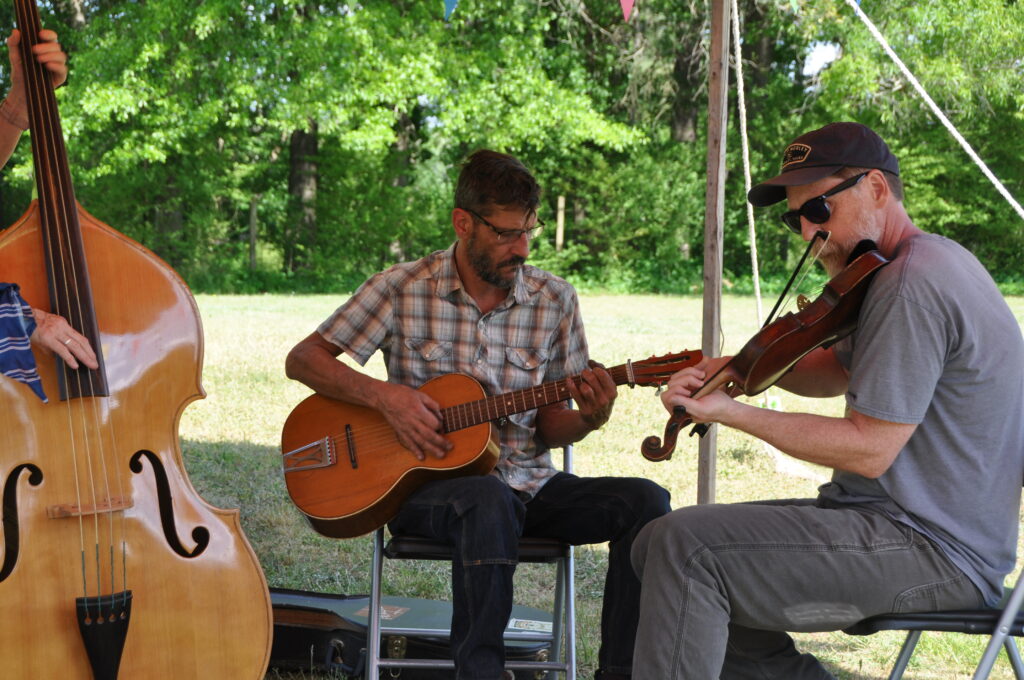
It was so easy to translate three-chord thrash-punk chord progressions. The percussiveness of the banjo—it’s old-time music, man. It translates right from one thing to the other. If you ever hear me play guitar onstage, I still play hardcore punk, but it’s on acoustic guitar with a fiddle and a banjo and a bass. The irony of it is these guys that I play music with now—Gil McNeill, Greg Hanson—they all grew up listening to punk music, too. They made the same transition. It’s so easy. Now I’m really into funky Scandinavian doom-rock. (laughs)
How about your craft? You said, “If I can draw it, I can make it.” You sound like you feel that’s the simplest thing in the world, but I don’t think to most people that’s the simplest thing in the world.
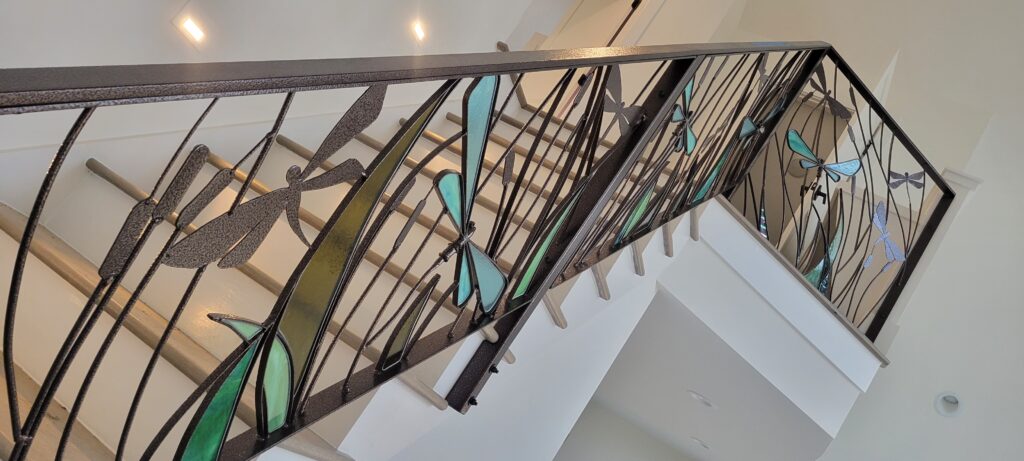
If I’m doing it for myself, I don’t have to draw it. I just think about it, and I make it. I know what it’s going to look like when I’m done. If I have a client, then I draw it, and that’s my failsafe. I like to just give them a starting point, and that is the literal thing. If I can draw it, I will make it exactly like what I drew.
When I was in high school—this was back when there was still drafting class—I was pretty good at drafting. The teacher would get me to draw houses. His regular job, aside from being a drafting teacher once a week, was he was a builder. I would draw houses. I would draw floor plans. I’ve had experience in that since I was 14, 15 years old. I don’t know that there’s any more to it than that.
You can weld. Carpentry is your love. You can also be a glassmaker. You alternate between the three of those. That sounds liberating.
It is super liberating, but it’s also constricting. It’s muscle memory. When you’re playing guitar, you just remember. It’s rote. You know what you’re doing, and you do that over and over. Not only does it get boring, but you get really good at it. You get really good at being boring. That’s when things start to take a nosedive.
I’ll work in [the metal shop] for three weeks and really hammer out some cool [stuff], and I’m done. I’m burned up and my hair’s singed. And you go and you work in the woodshop. You do that for a couple of weeks and, it’s like, I really want to get back to welding because it’s quiet. You’ve got your space and you’ve got your mask and your machinery is in the background going hummm. You can get in that zone.
I’ve got a passion for stained glass, I’ve got a passion for metal, and I’ve got a passion for wood. I started putting all three of those elements together. That’s why I love what I do. I can make chairs. Those chairs [I’m working on], they’re going to be completely clad in wood. I’ve got to go to the shop. I’ve got to bend the wood. I’ve got to pick the wood. I’ve got to saw the wood. I’ve got to steam-bend it. I’ve got to figure out how to get it to attach to metal.
It keeps your brain active. It keeps you moving. I’ve had several elderly friends of mine pass away, and what killed them was that they quit moving. They quit being stimulated. As soon as you stop, you’re done.
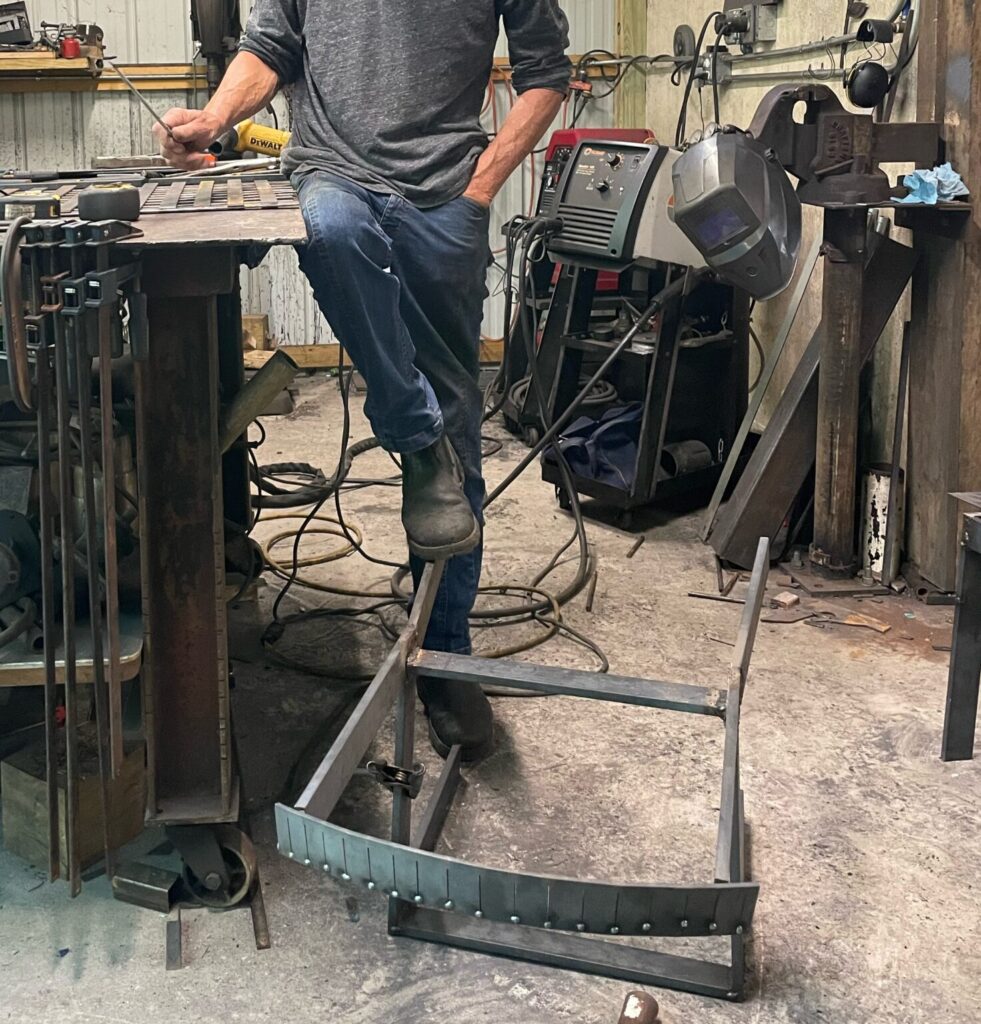
Fagan never stops, so drop a line his way if you have an interesting project in mind. Remember: if he can draw it, he can make it. View a gallery of Fagan’s work, and find his contact info at his website: https://
Guest writer Corbie Hill penned this Go See This feature. Corbie is a writer, musician, runner, and Star Trek superfan who lives in Pittsboro. Listen to Corbie’s music here, and find him on Instagram here.









Leave a Reply